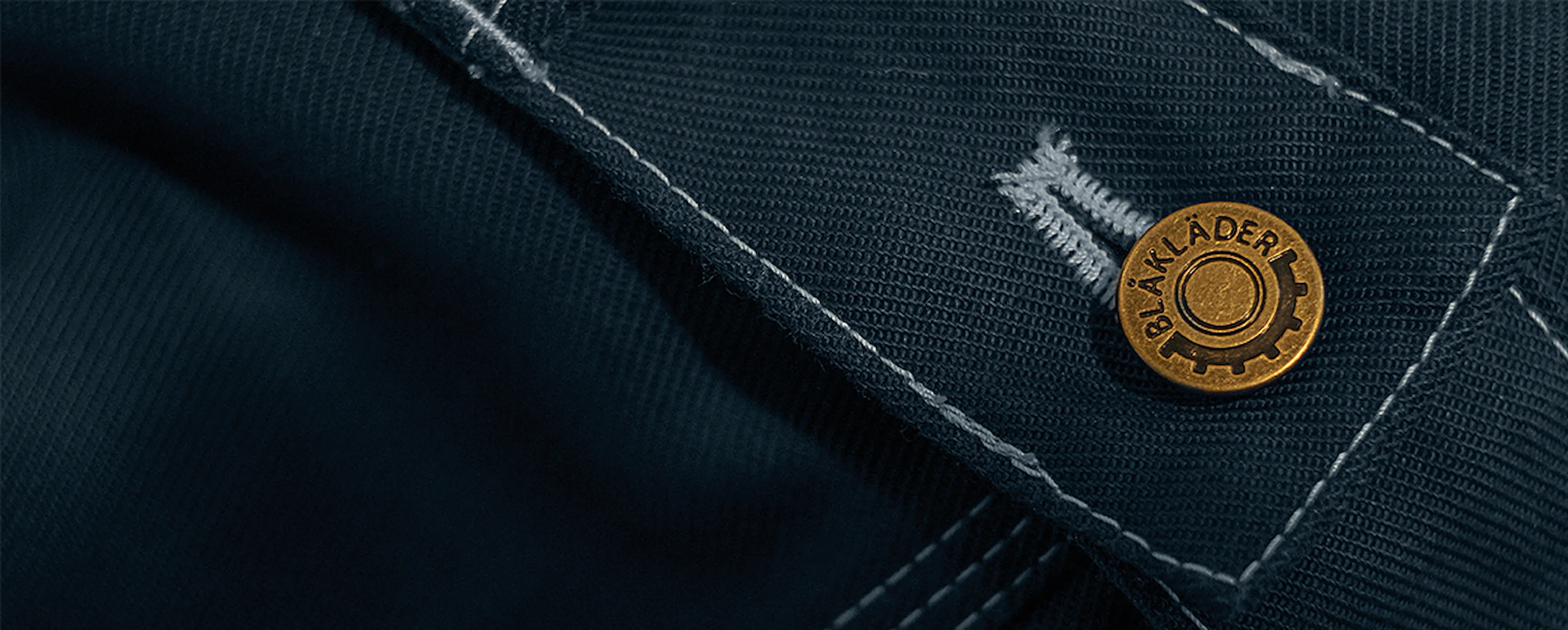

HARD WEARING SUSTAINABILITY
When it comes to workwear, what is a sustainable material? High durability and longevity are what first spring to mind, but we can also improve on these parameters by using materials with a smaller overall environmental footprint in the production chain. But when a compromise is needed, where does the sustainability line lie between renewable raw materials and a longer life cycle for the end product?
This is a question that we discuss on a daily basis, and there is no easy answer. The business of workwear and protective gear is very specific in terms of protection and functionality. The fact that these garments will only be replaced when they’re worn out, not because they go out of style, puts an even greater emphasis on durability and longevity.
This is why we are constantly working to increase each garment’s life cycle, as this is what offers the best returns for the environment. Examples of this are reinforcements in key parts of a garment, which offer a 50% increase in lifespan and an automatic saving of 30% on all production resources. If the focus were instead on replacing the raw materials alone, a saving of 2-10% on those resources would be possible.
By constantly striving to improve a garment’s longevity, we can reduce our environmental footprint. We are constantly working to improve our garments, which includes testing new reinforcements in exposed places, adjusting designs and fits, and finding optimal fibre blends for maximum durability and comfort. This is precisely why we have triple reinforced seams. After almost 60 years in the business, we know that a garment lasts only as long as its weakest link, and that it gets most work in exposed places.
If we were to remove our extra seams and reinforcements, the garment would wear out faster and our customers’ consumption would increase. While this might save us a some production resources, the shorter life cycle would raise other issues. And that is not sustainable. Studies suggest that if the life cycle of a garment is doubled, then its sustainability cost is, in principle, halved, as the wearer uses one garment instead of two.
For this reason, we will continue to reinforce our garments, to create a sustainable future in which fewer garments are consumed. This is why we have a lifetime guarantee on our seams, as we are certain that using fewer garments is the more sustainable way to go, both now and for the future.
* WHAT DOES THE LIFETIME GUARANTEE ON SEAMS MEAN?
If the seams of a garment split, we’ll repair or replace them. The warranty does not cover seams that split due to mechanical damage that tears or cuts the seam because of contact with sharp edges or tools, or if the fabric is otherwise worn out from general wear. Please return the item to the retailer where you bought the garment or contact uksales@blaklader.com. All garments must be returned to the retailer at the buyer’s expense before a garment can be repaired or replaced.